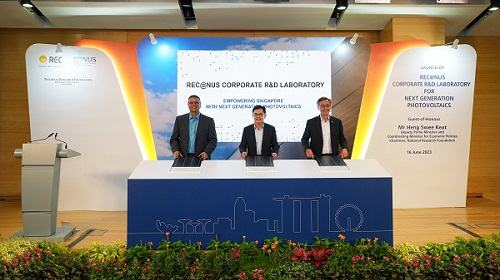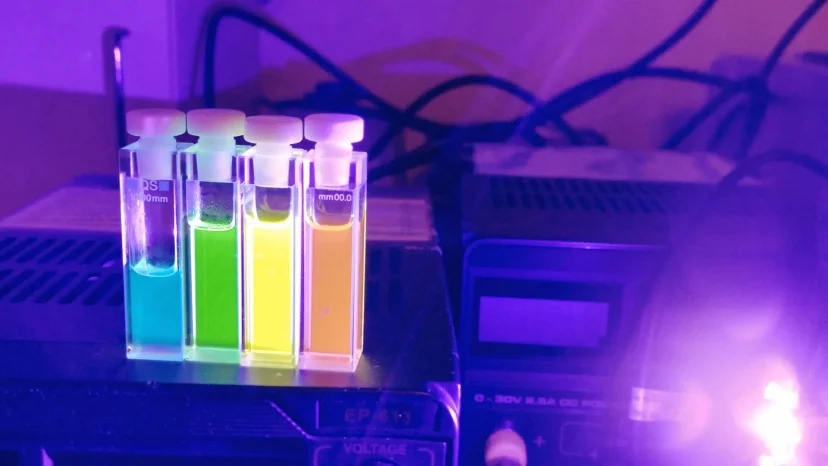
ADVA Rebrands as Adtran Networks SE; Swave Photonics Adds Investment Capital: Week in Brief: 06/23/23
MUNICH, June 23, 2023 — ADVA Optical Networking SE’s proposed name change to Adtran Networks SE was approved by the 2023 Annual General Meeting of ADVA Optical Networking SE on May 24. The change was registered in the commercial register of the local court of Jena, Germany, on June 8. The name change is a further step for the combination between ADVA and Adtran Holdings, which began with the conclusion of the business combination agreement between the companies in 2021.

A $57.3 million research initiative has been launched at the National University of Singapore (NUS) to boost innovation and research on advanced solar cell technologies in Singapore. Over the next five years, the REC@NUS Corporate R&D Laboratory for Next Generation Photovoltaics will research, develop, and commercialize disruptive solar photovoltaic technologies based on perovskite-silicon tandem solar cells. Courtesy of NUS.
SINGAPORE — A $57.3 million research initiative launched at the National University of Singapore (NUS) will see the creation of the REC@NUS Corporate R&D Laboratory for Next Generation Photovoltaics. The lab is jointly set up by the Solar Energy Research Institute of Singapore at NUS and REC Solar. The lab is intended to aid in the research, development, and commercialization of disruptive solar photovoltaic technologies based on perovskite-silicon tandem solar cells.
BRUSSELS — Nokia and its partners announced the completion of Europe’s first live hybrid quantum encryption key trial, with partner Proximus. Using technology from Nokia, ID Quantique, and evolutionQ, Proximus established a quantum-safe optical network connection using quantum key distribution to successfully encrypt and transmit data between two data centers located in Brussels and Mechelen, Belgium.
FREMONT, Calif. — The Optical Internetworking Forum (OIF) launched the Energy Efficient Interfaces Framework, a project that will focus on studying new energy-efficient electrical and optical interfaces. The project seeks to develop, among other things, the next generation of low-power optics, also referred to as “linear” or “direct drive.” These interfaces will be required to meet the demands of applications including data center networking, artificial intelligence training/machine learning, and disaggregation.
ESPOO, Finland — Kuva Space was awarded a five-year commercial contract worth $5.5 million to be the sole provider of hyperspectral data services for the European Commission’s Copernicus Contributing Missions program. Chosen by the European Space Agency, Kuva Space will demonstrate its proprietary technological capabilities to monitor farming and aquaculture crops, forests, methane release, and harmful algae blooms in seas and coastal areas.
QUÉBEC CITY — LeddarTech, an automotive software company providing sensor fusion and perception software for advanced driver assistance and autonomous driving, entered into a business combination agreement with Prospector Capital Corp., a publicly traded special purpose acquisition company. The transaction would result in LeddarTech becoming a publicly listed company. Upon closing of the transaction, expected by the fourth quarter of 2023, LeddarTech is expected to be listed on the Nasdaq under the ticker symbol LDTC.
TOKYO — Mitsubishi Electric Corp. demonstrated laser optical frequency control using a new light source module, a key component of an envisioned high-capacity laser optical communication network to be deployed in outer space, the company said. The module, which produces a 1.5-µm wavelength signal, was installed in the OPTIMAL-1 nanosatellite developed through an industry-academia collaboration and released from the International Space Station Jan. 6. The use of a nanosatellite enabled the demonstration to be carried out faster and at lower cost than using a conventional large satellite.
LEUVEN, Belgium — Swave Photonics, a developer of holographic technology for augmented reality, has closed its seed round expansion with an additional investment of €3 million ($3.3 million). The new funding brings total funds raised by the company to €10 million, following its €7 million round in June 2022. The round saw reinvestment from current investors imec.xpand, Flanders Future Techfund, and QBIC. Joining these investors were Acequia Capital and Luminate NY.
GOTHENBURG, Sweden — Researchers from Chalmers University of Technology will work with colleagues from three other European universities to develop a multiphoton microscopy method as part of a project that was granted 25 million SEK ($2.3 million) over three years from the EU fund Pathfinder Open. The project has been given the acronym 4for2 and will attempt to develop two-photon microscopy to achieve images as clear as in four-photon microscopy. Chalmers will work with the University of Gothenburg, the University of Huelva, and KU Leuven in Belgium.

A European research team supported by a multimillion dollar EU fund award will investigate whether the advantages of two-photon microscopy, which deploy less powerful lasers, can be used to obtain images of a quality that four-photon microscopy can deliver. Joakim Andreasson, professor in Chalmers University’s Department of Chemistry and Chemical Engineering, is coordinator for the project. Courtesy of Chalmers University.
KARLSRUHE, Germany — HQS Quantum Simulations received a €1 million investment from TRUMPF Venture II GmbH. HQS intends to leverage the financing to further develop quantum computing to solve problems in materials research and the pharmaceutical industry.
/Buyers-Guide/Adtran-Inc/c20906
/Buyers-Guide/Nokia/c33461
/Buyers-Guide/ID-Quantique/c6455
/Buyers-Guide/LeddarTech-Inc/c20956
/Buyers-Guide/Mitsubishi-Electric-Corp/c33041